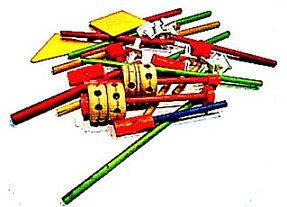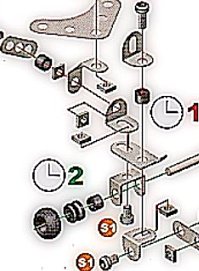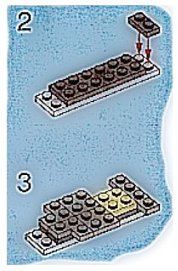Teaching With
Toys and Model Kits
We each have had favorite toys and model kits. Some of us retain these favorites as parts of a collection or, at least, cherish fond memories of a model we built from a kit or so enjoyed a plaything that we built a collection of toys around it.
We read the exciting words on the package or wrapper that says, "hours of fun" "realistic" "action-packed" "true scale" or "instructions included". OK, some of us read them. Others just rip open the box!

However we open them, toys and model kits are thrilling. Even better for an educator, they come with some of the most useful Real World material we ever get our hands on.
Illustrated. Diagrammed. Ordered. Sequenced. Instructive.
The toy or the model offers endless reference for the reading of enclosed instructions. They are filled with specialized and exciting vocabulary items that most every student wants to discuss and argue or clarify meaning. Assembly drawings appear magically three-dimensional. There is Real World experience and knowledge brought to working with toy and model assembly. Opinion to be offered. Tips to be shared.

We learn:
* The language of print is patterned and predictable. In product packaging, for example, the reader expects information such as appearance, size, color, price, number of parts, and utility.
* Illustrations offer information useful to the reader, for example, assembly drawings that represent spatial relationships.
* Specialized vocabulary such as parts of a sailing vessel, for example, in the assembly of a model kit of the Bluenose or the RMS Titanic .
* Instructions are sequenced as the reader works through "guided"planning within "guided" play.
* Experimentation with construction, its planning and sequence, task analysis, and problem-solving.
* Experimentation with construction and its spatial representation.
* Pattern recognition of symbol use and function.
* Rereading instructions, after and during experimentation, clarifies understanding.
For me, the most valuable of the many literacies accessible in toy and model kit assembly, is the least represented in formal education -- spatial literacy -- that interface between knowledge base, reading, visualizing across planes, and conceptualizing in three dimensions.

Here is a fun introduction to, and practice with, spatial relationships as represented on a single plane of paper. Assembly drawings encourage the examination of parts, the experimentation with their assembly, and how parts and their assembly are graphically represented.
It takes few repetitions building toys and model kits to practice basic spatial literacy. Yet, these assembly drawings are vivid examples of the symbolizing function that any reading represents. Numerals of instructions symbolize order. Dashed or colored lines may indicate folds or placement. Photographic image is surpassed by drawing that cuts visual noise and renders only what is distinctively important.
Spatial literacy -- the basic tool of engineers, architects, 3-D animators, and others -- can all start with toy or model kit assembly.
And, as any good educator knows, built from nothing more than a single flat sheet of paper!
Return from Toys and Model Kits to Real World Content Advantage home page.
Enjoy this page? Please pay it forward. Here's how...
Would you prefer to share this page with others by linking to it?
- Click on the HTML link code below.
- Copy and paste it, adding a note of your own, into your blog, a Web page, forums, a blog comment, your Facebook account, or anywhere that someone would find this page valuable.